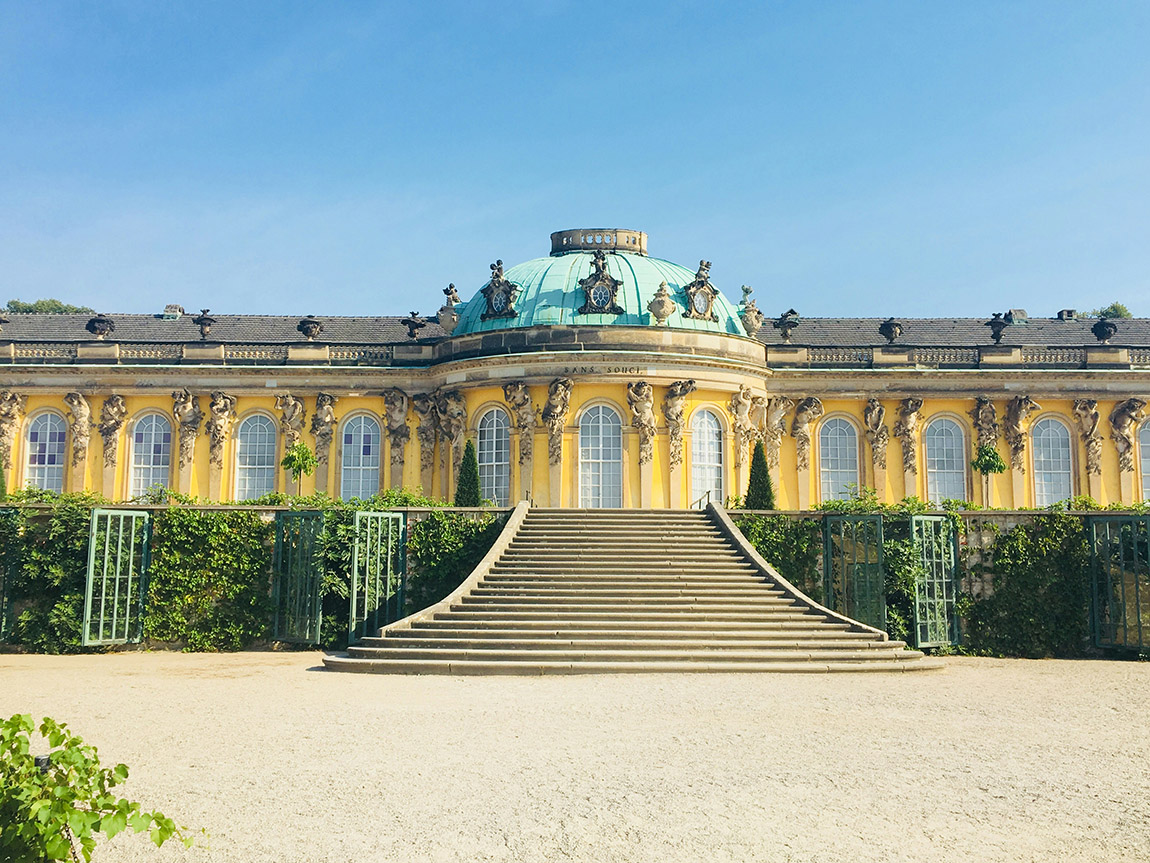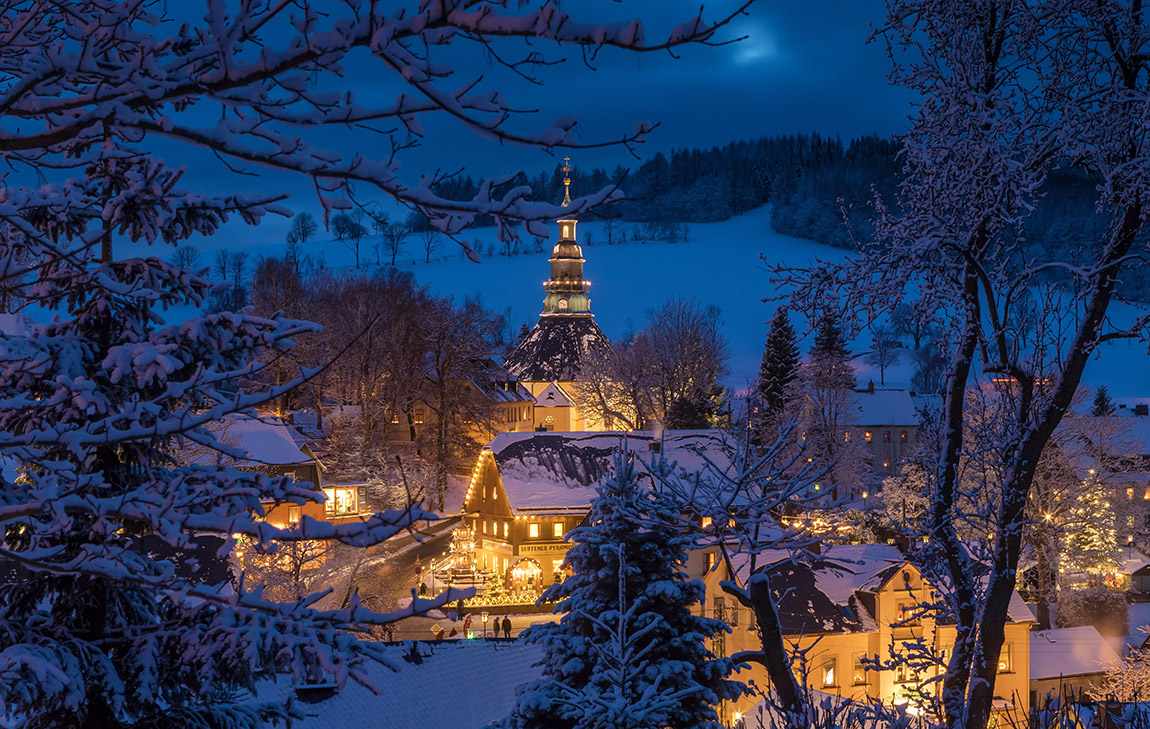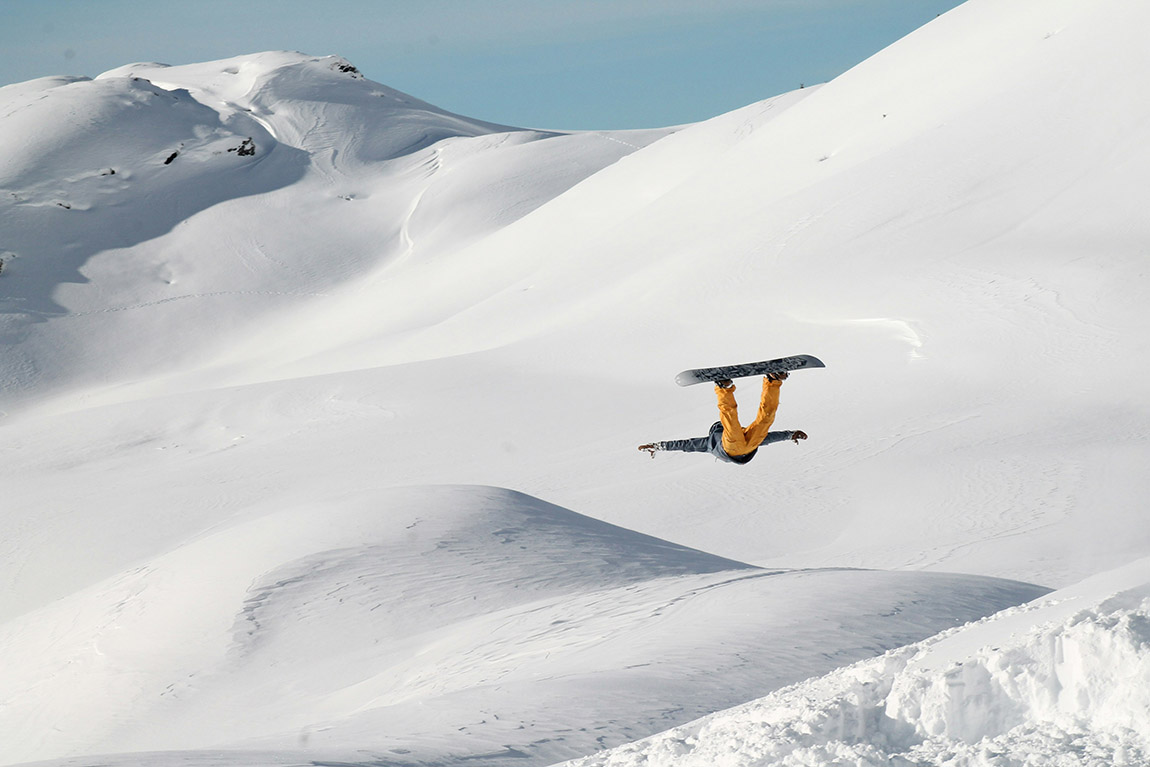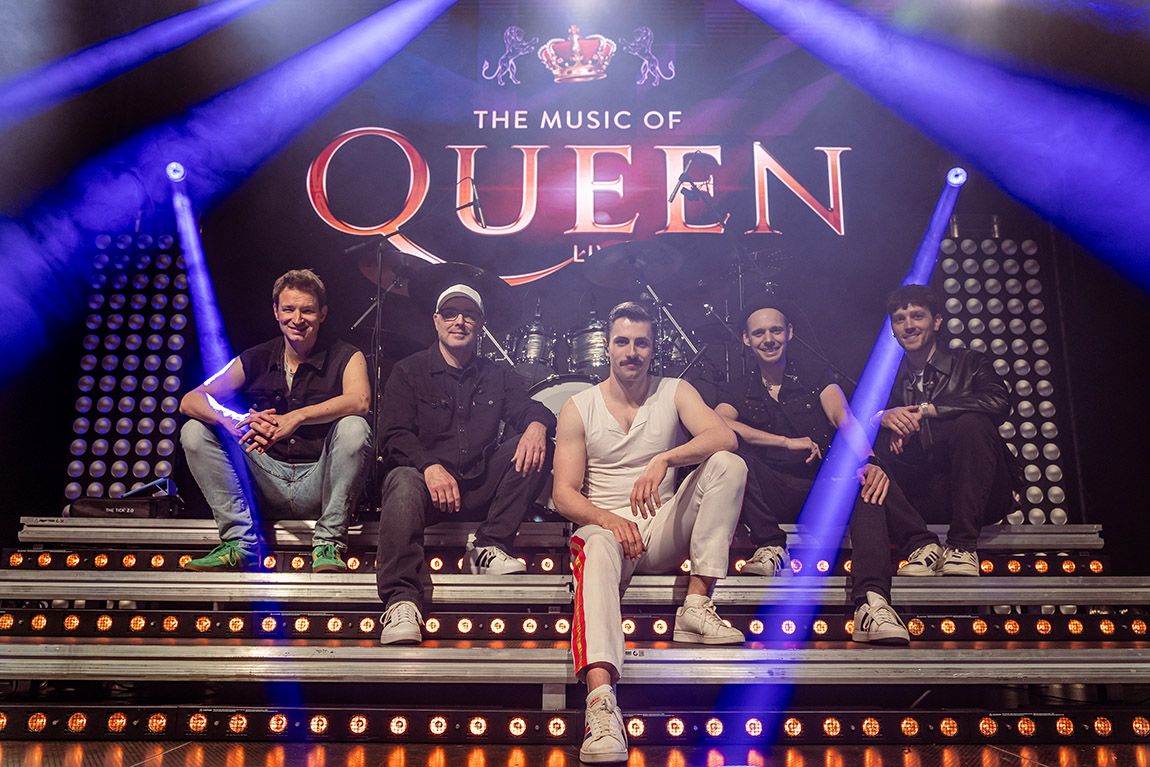Hamburg’s Flak Tower IV – From Nazi bunker to green oasis
TEXT: WIBKE CARTER
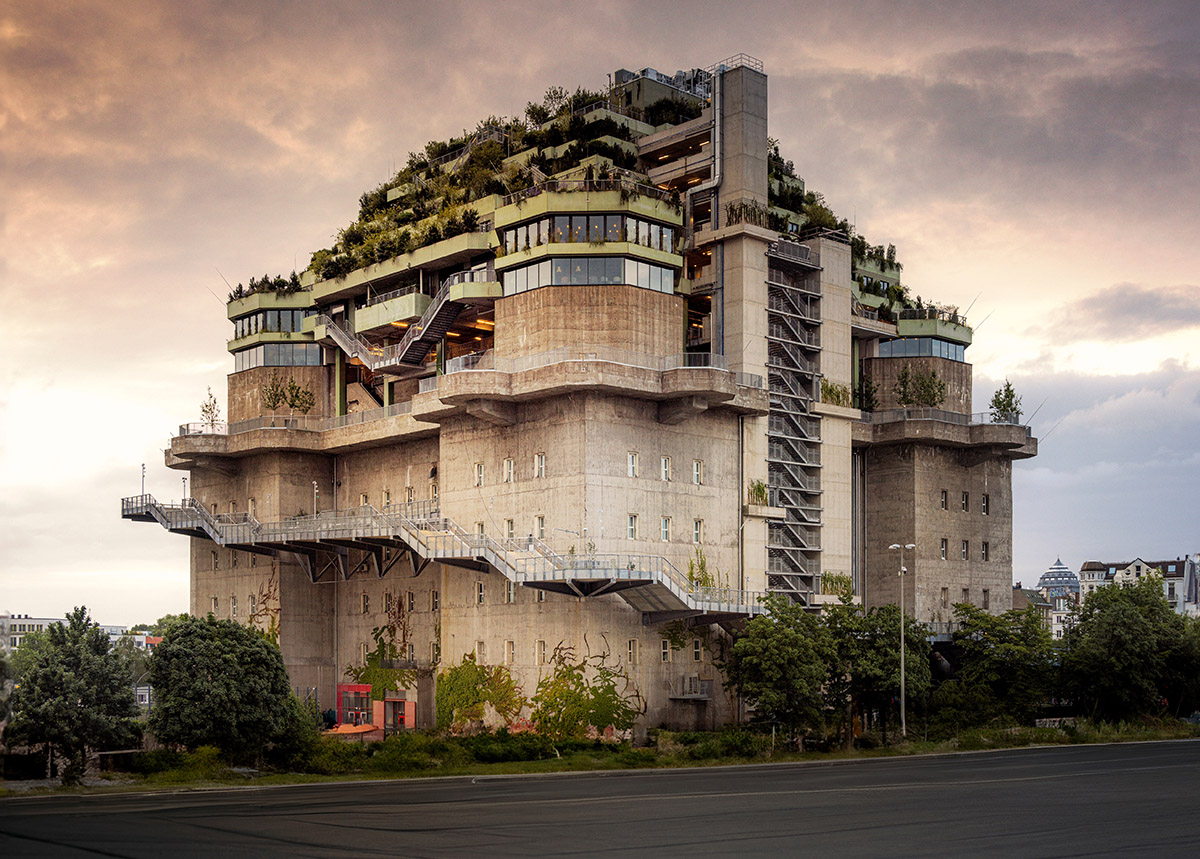
Photo: HMG
Hailed as the most exciting opening since the Elbphilharmonie, a formidable relic from World War II has been given a new lease of life in the St Pauli district. Our writer Wibke Carter was on site to explore the Hanseatic city’s latest tourist attraction
Since early July 2024, the colossus at Heiligengeistfeld field has been open to visitors and tens of thousands of people have already taken advantage of the offer. Around 4,000 individuals visit the Hamburg bunker every day and weekends are particularly popular, said a spokeswoman for the operator RIMC. “On the first weekend after the opening, we had no fewer than 25,000 visitors.” The once grey but now green World War II bunker with its surrounding “Bergpfad” (mountain path) to the public roof garden is not only frequented by people from Hamburg, but also by many tourists from Germany and all over the world.
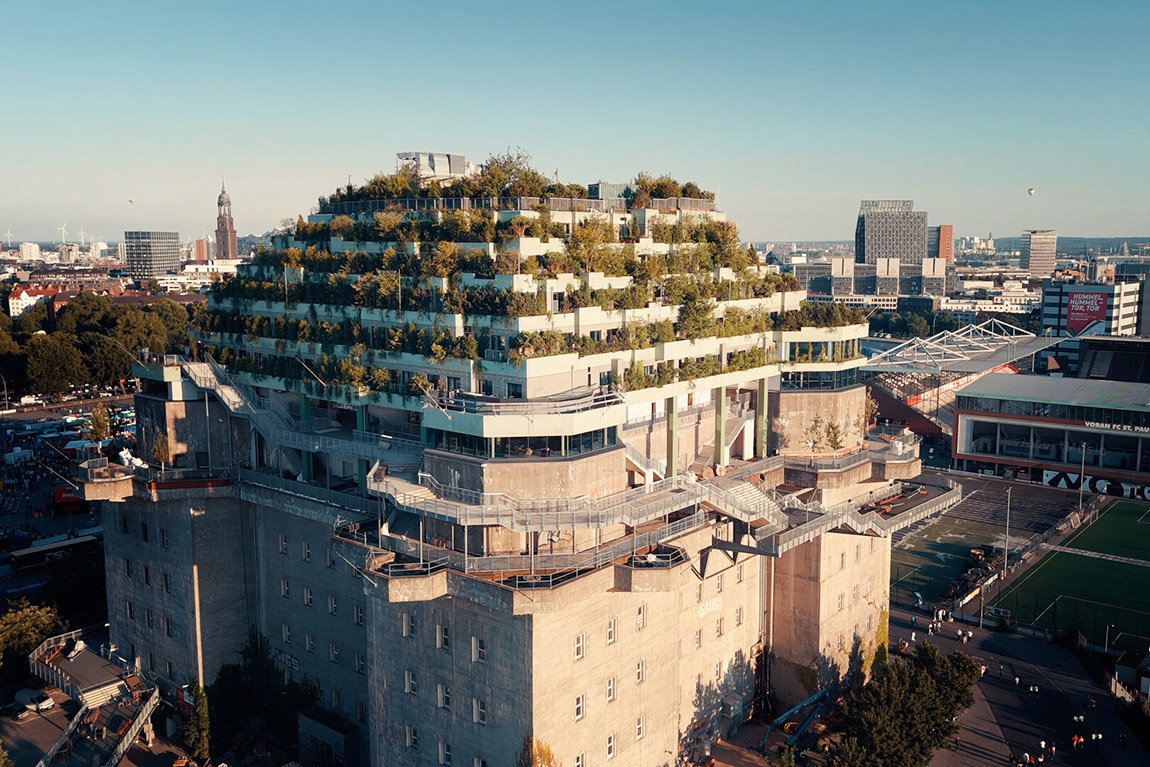
Photo: Wikimedia Commons
Historical context and construction
The construction of the Hamburg bunker, formally known as the Flak Tower IV (Flakturm IV), was initiated in 1942 as part of a larger network across major German cities. Overall, there were eight Flaktürme: three in Berlin, two in Hamburg and three in Vienna. The design of these towers was driven by the need to provide effective anti-aircraft defence and to protect civilians from increasingly frequent and destructive Allied bombing campaigns.
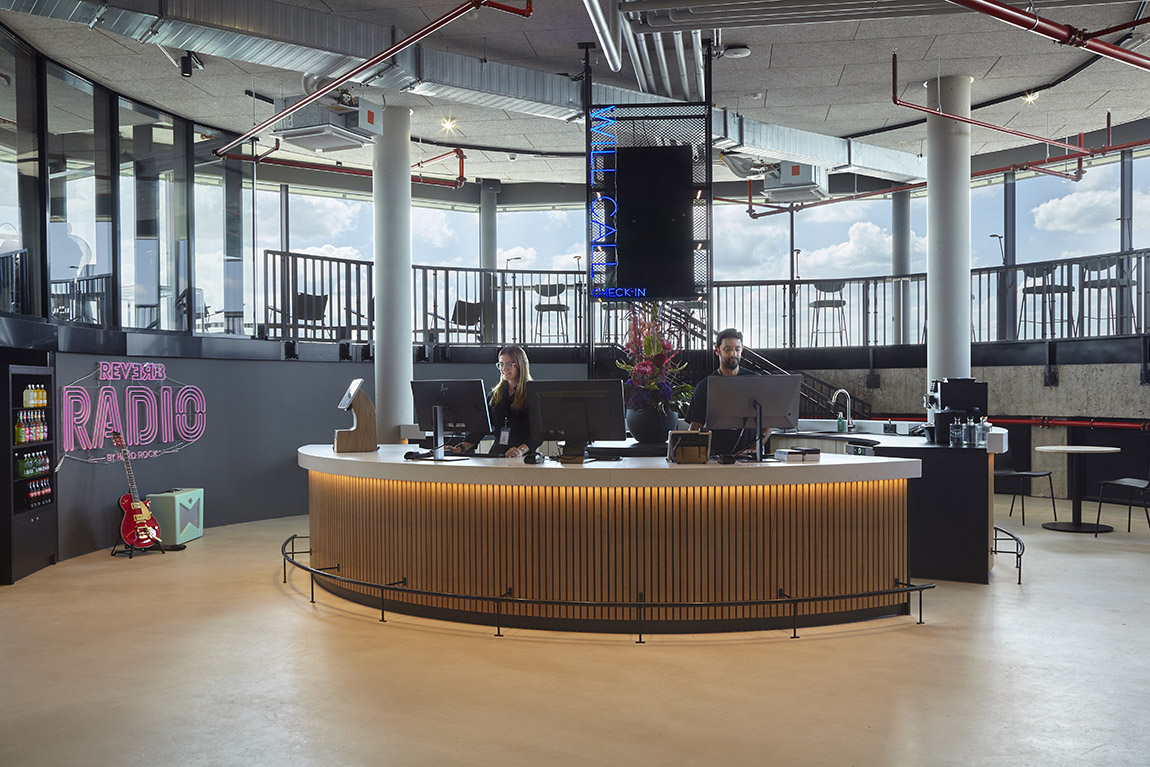
Photo: Maren Schabhüser
The Hamburg flak towers were constructed with extraordinary speed and efficiency, completed in just under 300 days by forced labourers. They were designed to withstand heavy bombing and housed anti-aircraft guns capable of shooting down enemy planes. The Hamburg-St. Pauli bunker was built with walls and ceilings up to 3.5 meters thick, making it virtually impervious to the bombs used during the period. It featured multiple levels, including gun platforms, living quarters, and extensive storage areas for ammunition and supplies. The rooftop was equipped with heavy anti-aircraft artillery, including powerful 128mm FlaK 40 guns.
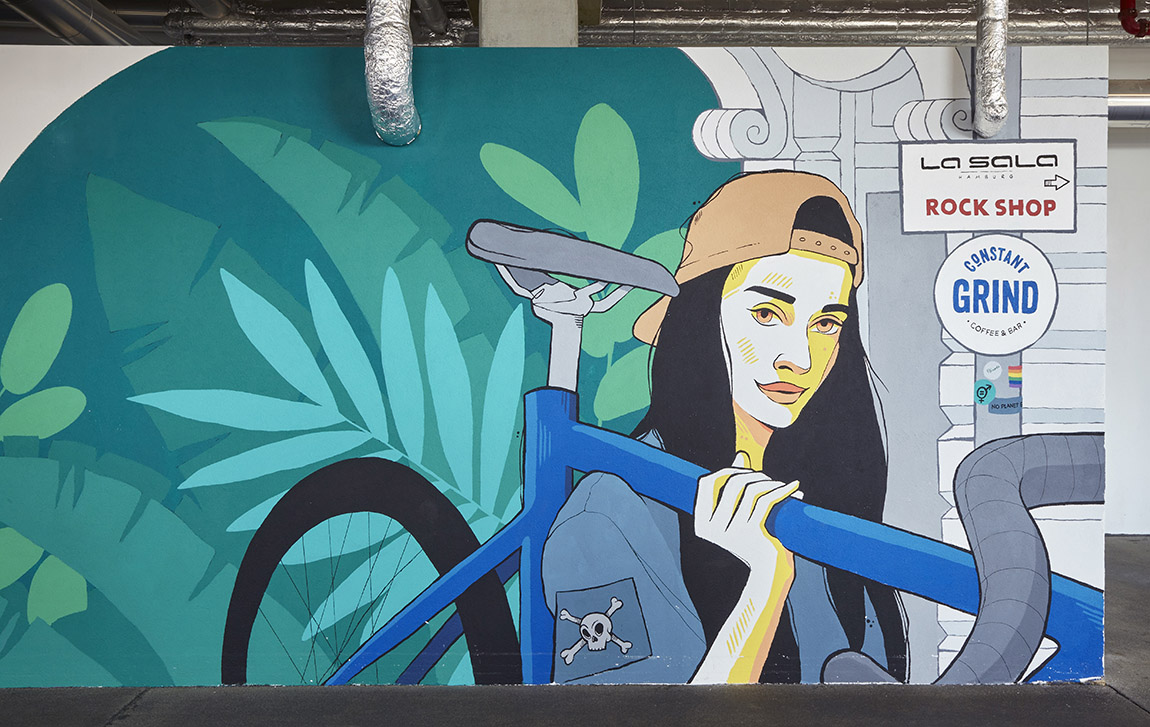
Photo: Maren Schabhüser
Besides its defence function, the bunker also provided refuge for thousands of civilians during air raids. It could accommodate up to 18,000 people at a time, offering them a relatively safe haven from the relentless bombing campaigns. The bunker’s interior was designed to sustain prolonged occupancy, with provisions for water, food, and basic medical care. The psychological impact of having such a robust shelter available cannot be understated; it offered a semblance of security amid the chaos of war.
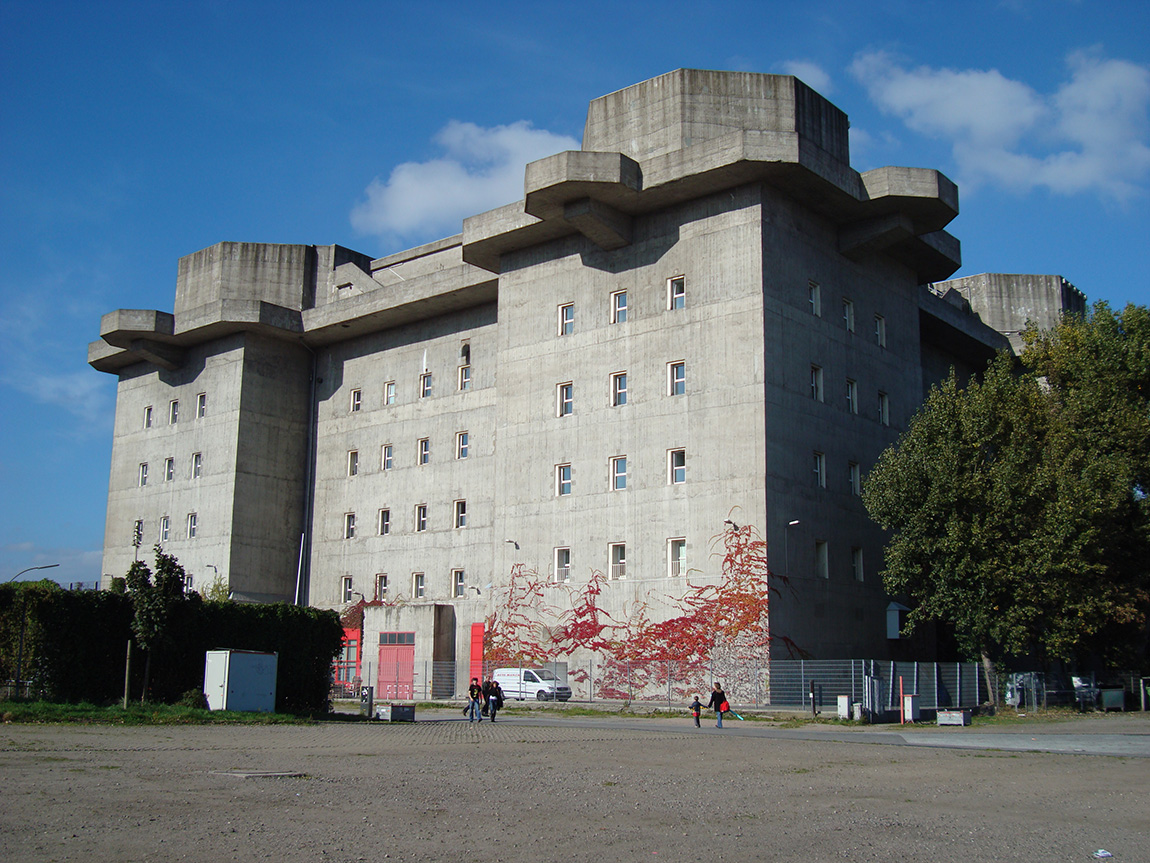
Photo: Wikimedia Commons
Post-war transformation
After Germany’s defeat in 1945, the Hamburg bunker was used for a few months as accommodation for locals who had lost their homes, then, like many other military structures, it faced an uncertain future. The Allied forces considered demolishing these bunkers due to their symbolic association with the Nazi regime. In Berlin, all three flak towers were blasted, however, the sheer size and robustness of the Hamburg bunker made demolition impractical and costly. Consequently, it was left standing, gradually integrating into the urban landscape of the post-war Hanseatic city.
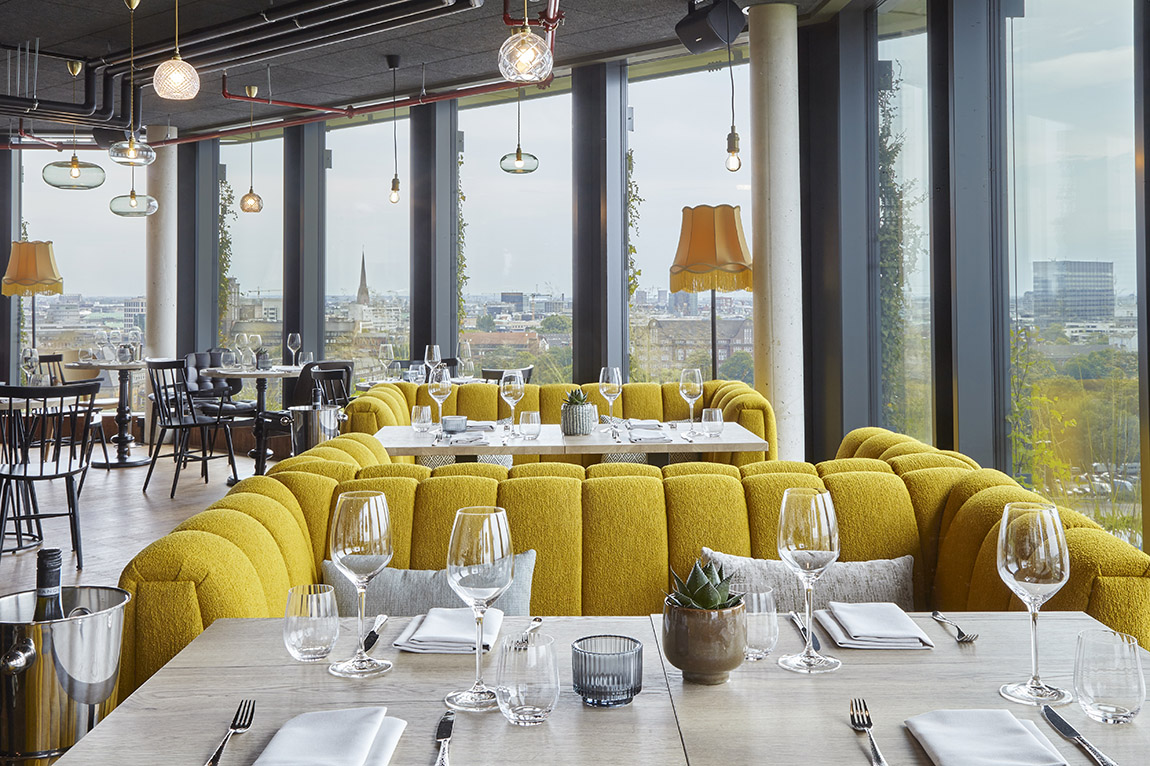
Photo: Maren Schabhüser
In the decades following World War II, the bunker found new life through adaptive reuse as its solid construction made it suitable for a variety of functions. In the 1950s a TV station as well as a sound recording studio moved in which gave the flak tower the name “media bunker”. Over the years, other tenants included Uebel & Gefährlich, a music club, JustMusic, a musical instrument dealer, a theatre as well as various advertising agencies. During the Cold War, the bunker was repurposed to serve as a potential bomb shelter in the event of a nuclear attack.
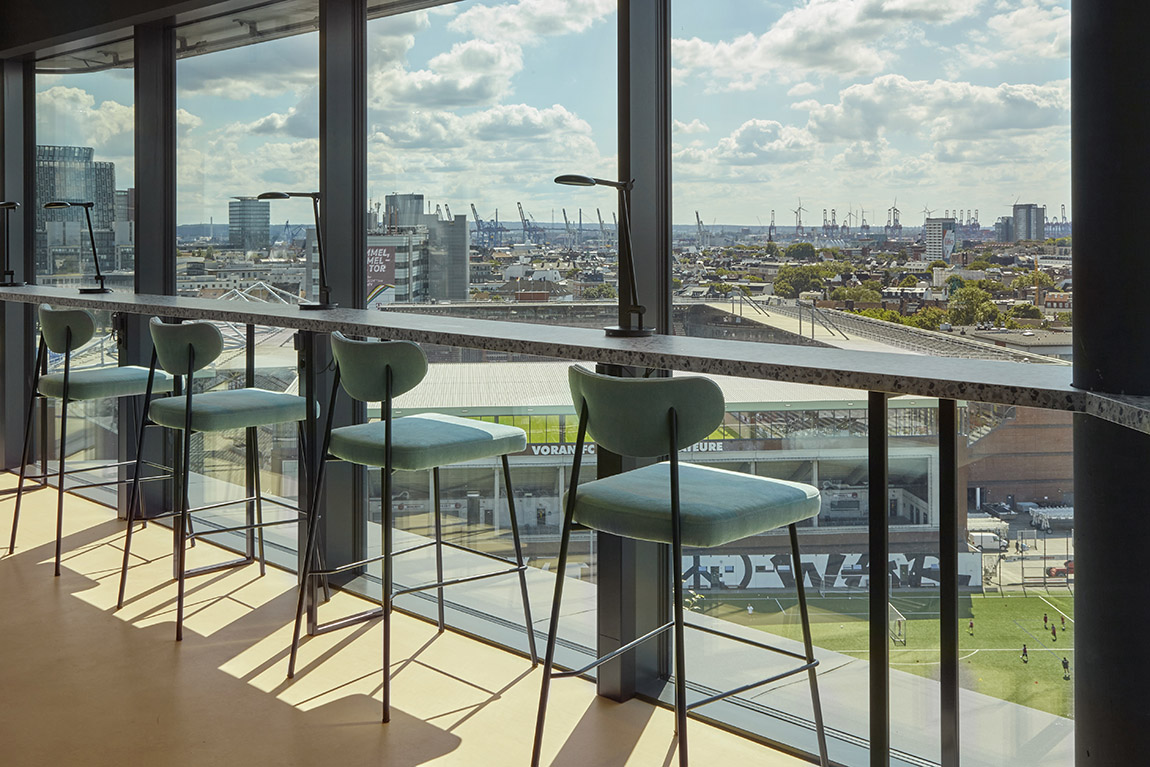
Photo: Maren Schabhüser
Modern-day usage
Today, the Hamburg bunker has been transformed into a vibrant cultural and commercial hub. In September 2021, the RIMC Hotels & Resorts Group won the tender to operate a hotel which resulted in the opening of the REVERB by Hard Rock Hotel with 134 rooms as well as a bar, a main restaurant, a coffee shop, a rock shop and the rooftop garden with urban farm which symbolizes a stark contrast to its original wartime purpose. This green space not only provides local produce but also serves as a community gathering area and a symbol of renewal. “We raised the height from 38 meters to 58 meters by putting five additional levels on top of the existing bunker,” says REVERB Sales and Marketing Coordinator Nele Tüxen. “And we planted around 23,000 plants out of which around 4,600 are trees on the rooftop garden, on various patios and along the public walkway.” The bunker is set to become a new landmark for Hamburg – while remaining very approachable (free entry). It will stand as a symbol of diversity,tolerance and respectful coexistence, and shine brightly just like its new appearance.
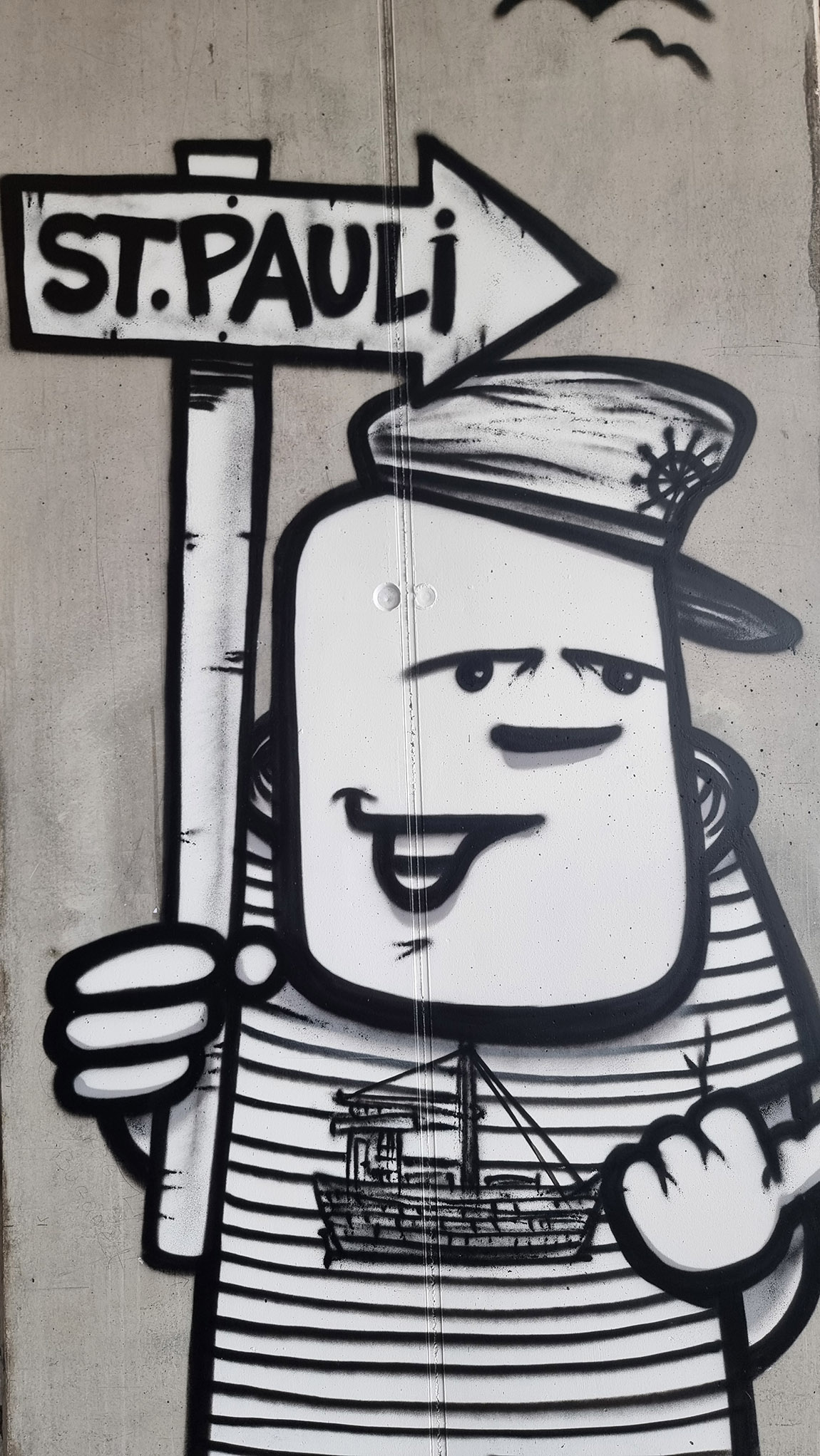
Photo: Wibke Carter
Subscribe to Our Newsletter
Receive our monthly newsletter by email

